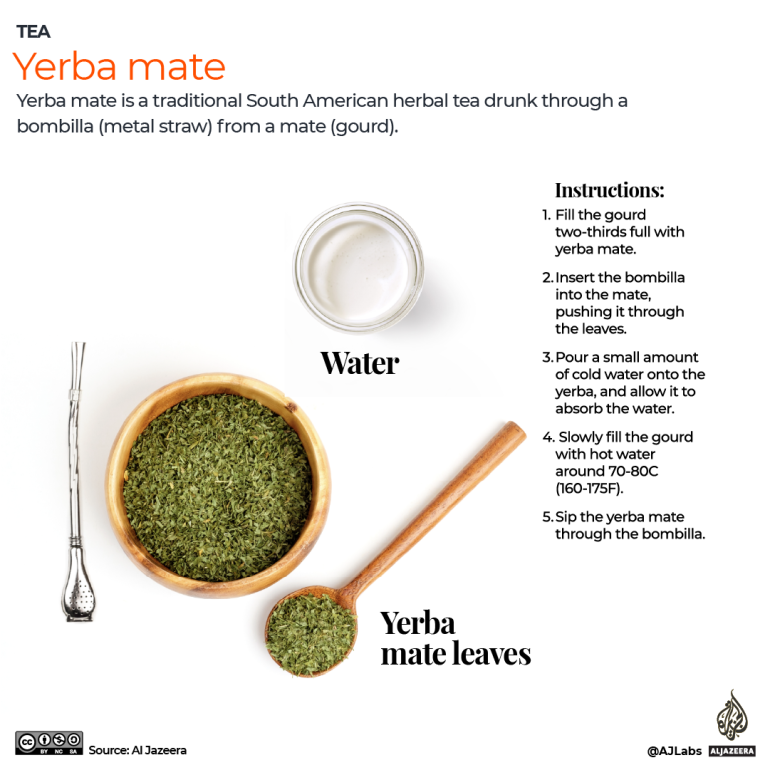Tea or chai? Celebrating International Tea Day
Across the globe, nearly all words for tea can be derived from the root-words cha or te.
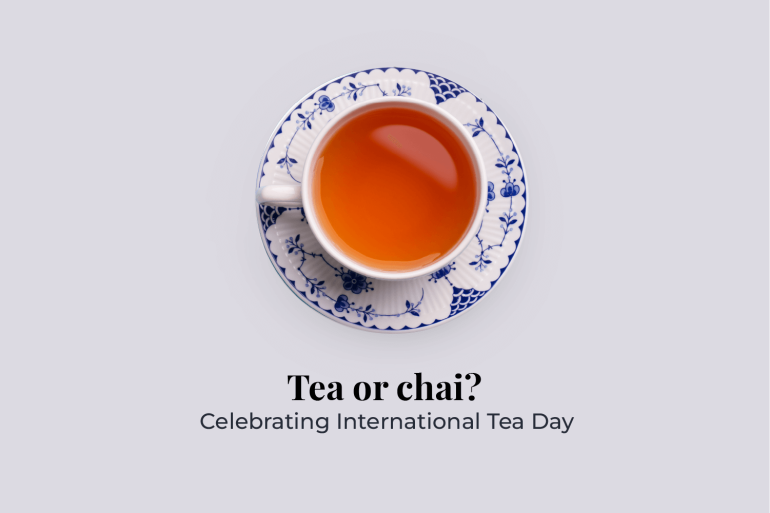
Tea is the most popular drink across the globe, after water. To celebrate the cultural heritage, health benefits and economic importance of the drink, the United Nations designated May 21 as International Tea Day.
Tea plays a meaningful role in many societies and offers a rich selection of aromatic flavours from all over the world. Tea is also valued for its anti-inflammatory and antioxidant qualities.
Keep reading
list of 4 itemsMapping Israel-Lebanon cross-border attacks
Eid Mubarak: Hear greetings in different languages
When is Eid al-Fitr 2024 and how is it celebrated?
While the exact origins of tea are unknown, it is believed to have originated in northeast India, north Myanmar and southwest China, according to the UN. There is evidence that tea was consumed in China some 5,000 years ago, making it one of the oldest beverages in the world.
How to say tea around the world?
Across the globe, nearly all words for tea can be derived from the root words “cha” or “te”.
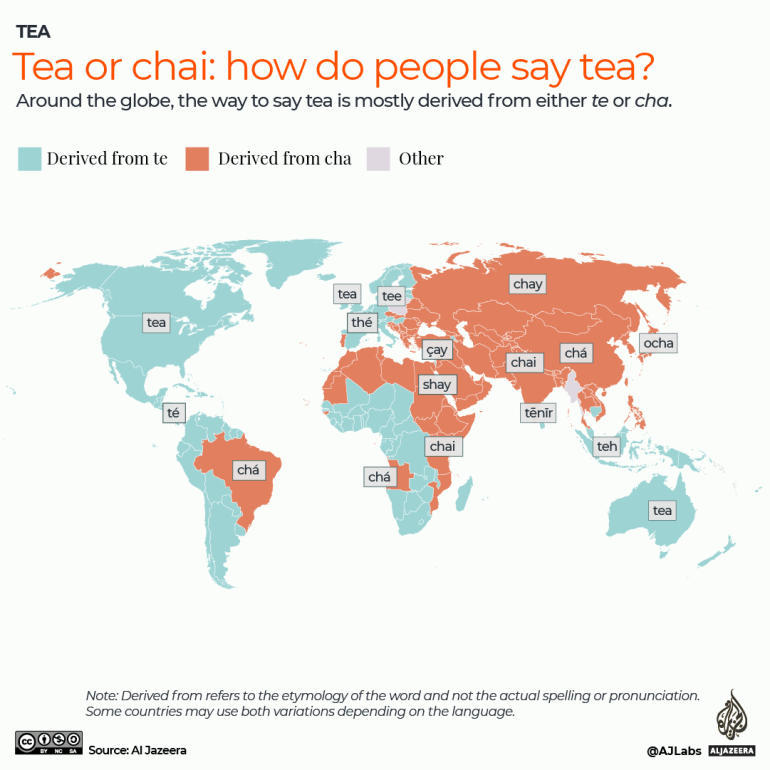
In many parts of South Asia, Southeast Asia, Central Asia, the Middle East and Eastern Europe, the word for tea is derived from cha.
- In Mandarin: 茶 (chá)
- In Arabic: شاي (shāy)
- In Turkish: çay
- In Hindi: चाय (chāi)
In Western Europe, many countries use some derivative of te, for example, “tea” was introduced into the English language as a result of trade routes in the East. The word was taken from China, where it was pronounced “te” in the Hokkien dialect.
- In English: tea
- In French: thé
- In Spanish: té
- In German: tee
Who produces the most tea globally?
The tea plant is usually grown in warm tropical and subtropical climates where its cultivation and processing support the livelihoods of millions of people.
According to the latest data from the Food and Agriculture Organization (FAO), more than 6.5 million tonnes of tea was produced worldwide in 2021. The Far East was responsible for producing 80 percent (5.3 tonnes) of all the world’s tea.
China produces nearly half of the world’s tea (47 percent), with some 3 billion tonnes produced in 2021. India is the second highest tea producer, accounting for 20 percent (1.35 million tonnes) of the world’s tea, followed by Kenya with more than 8 percent of global production.
Sri Lanka, Turkey, Vietnam, Indonesia, Bangladesh and Argentina are among the top 10 tea-producing countries around the world.
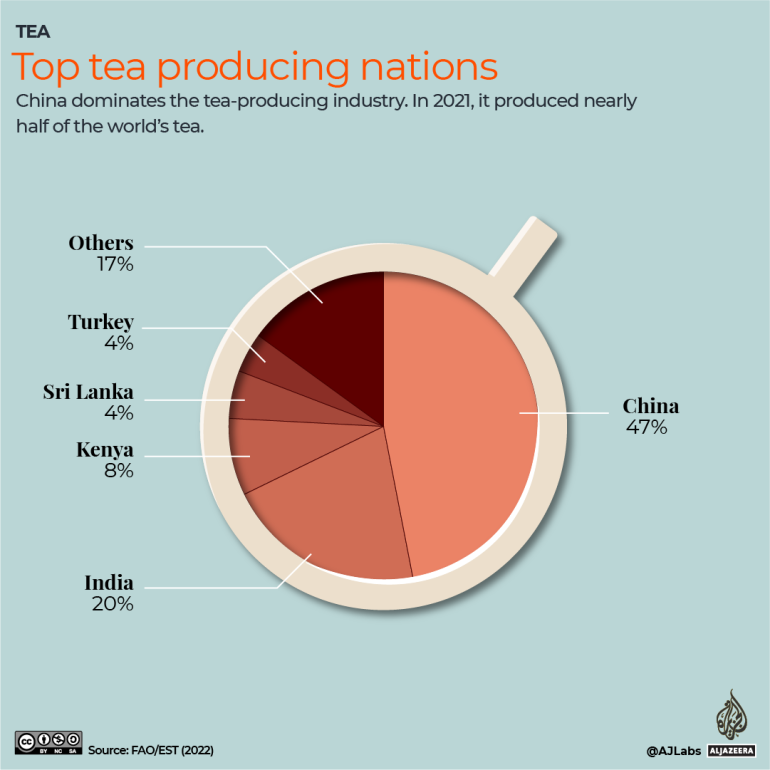
How much tea is consumed daily worldwide?
Tea drinking is very common among many nations, including China, where more than 2.7 million tonnes of tea were consumed in 2021, followed by India (1.1 million tonnes) and Turkey (0.3 million tonnes).
Pakistan, Russia, the United States, Egypt, Japan, Bangladesh and Indonesia round up the top 10 tea-consuming countries in 2021.
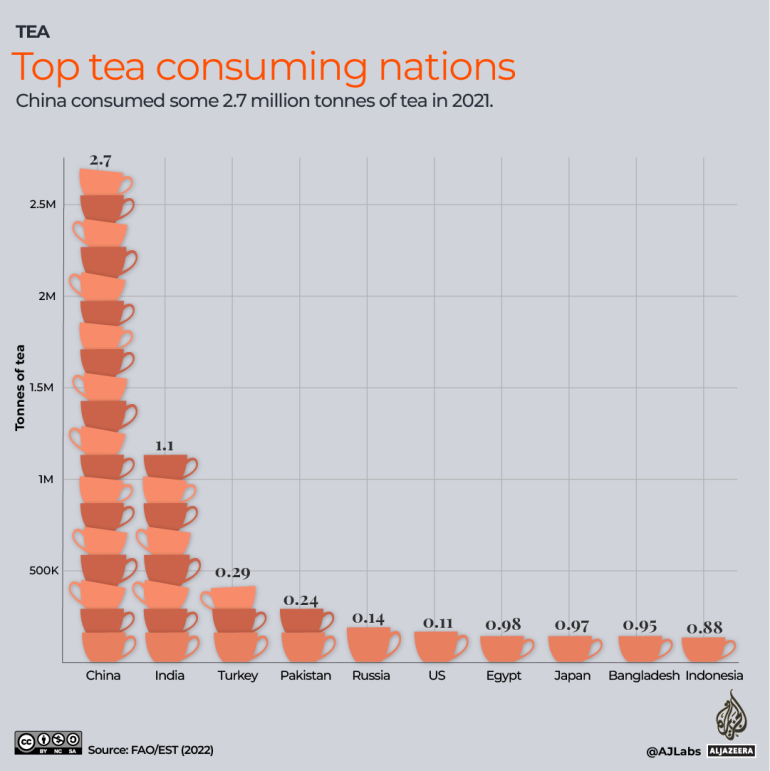
How to make different kinds of tea?
Tea drinking is culturally significant across the world, from being a marker of hospitality to the idiosyncratic methods in which different teas are made.
Below are some techniques for how to make well-known teas from around the globe.
Masala chai
Masala chai is a popular spiced tea common across South Asia. The milky tea is known for its rich and aromatic flavours. India is known for its street vendors or chai wallahs, who line the streets.
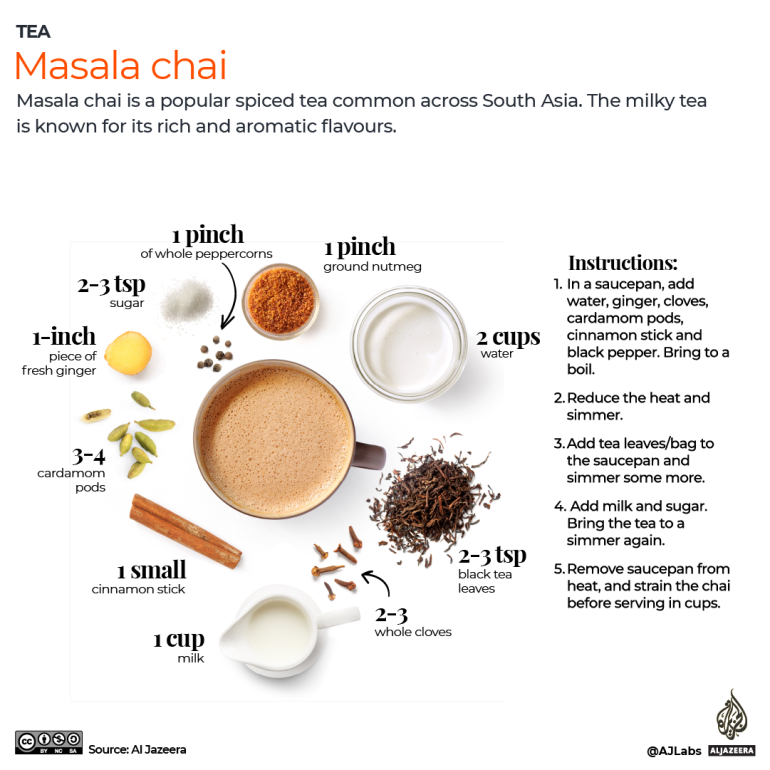
Turkish tea
Turkish tea, also known as çay, is made in a caydanlik, a two-tiered teapot. The upper pot is for the black tea leaves and the lower part is for boiling water. Most of Turkey’s tea is produced in the northeast Black Sea region in Rize province due to its mild climate.
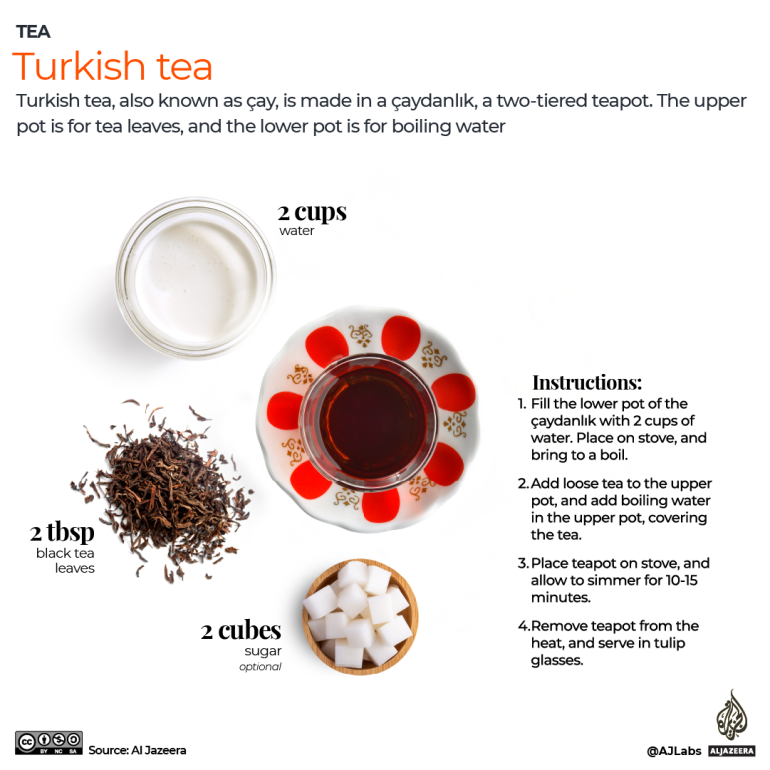
English tea
The British are infamous for tea drinking, though there is an ongoing national debate about who produces the best tea – PG Tips or Yorkshire Tea. According to a YouGov tea tracker, more than 60 percent of Britons drink tea at least once a day.
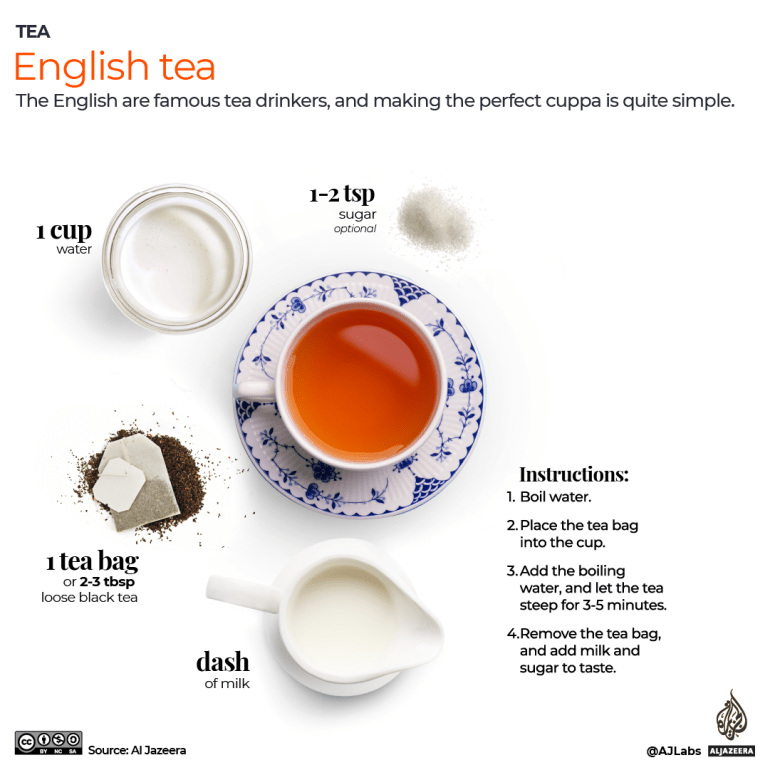
Matcha tea
Matcha is a traditional Japanese green tea powder made by grinding up whole tea leaves. Although matcha is known as a Japanese tea, it was brought to Japan from China. Matcha is high in catechins – an antioxidant compound known to have many health benefits.
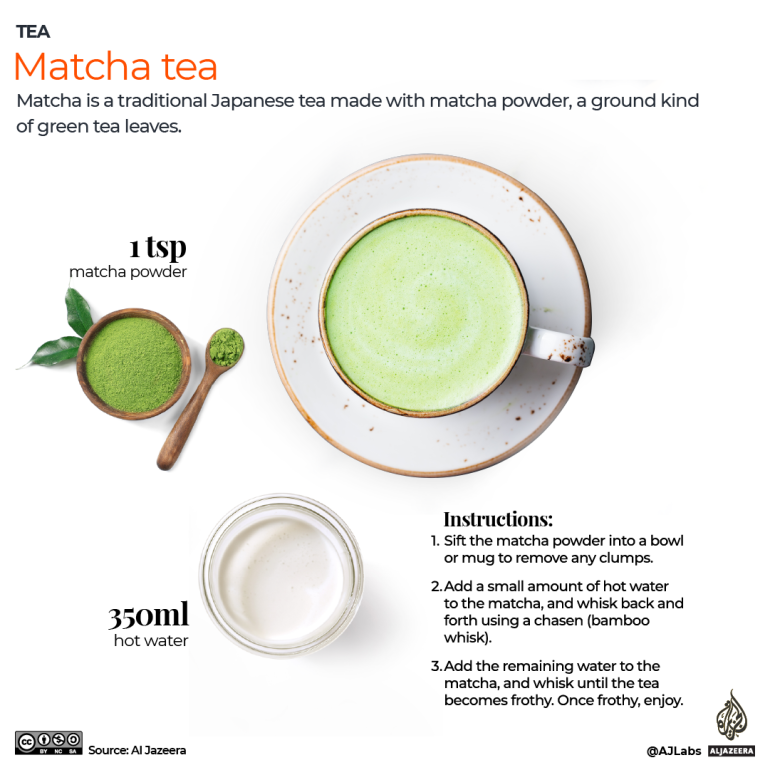
Moroccan mint tea
Moroccan mint tea, also known as Maghrebi mint tea, is enjoyed across the Middle East and North Africa. Served in small, decorative glasses, the hot beverage is a symbol of hospitality.
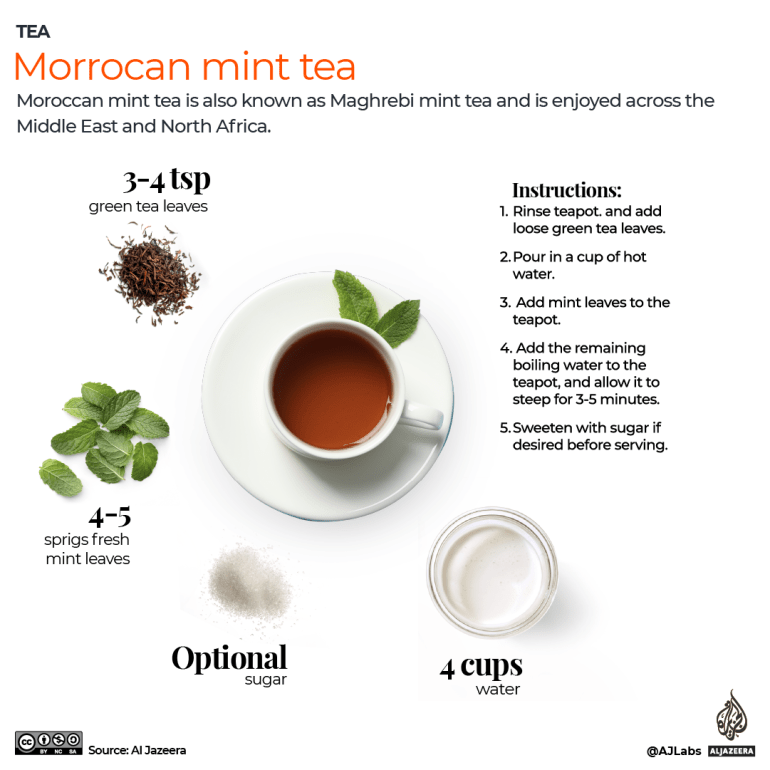
Yerba mate
Yerba mate is a traditional South American herbal tea which is drunk using a bombilla – a special type of metal straw – from a drinking bowl or gourd. It is consumed communally, with people usually drinking from the same gourd.
